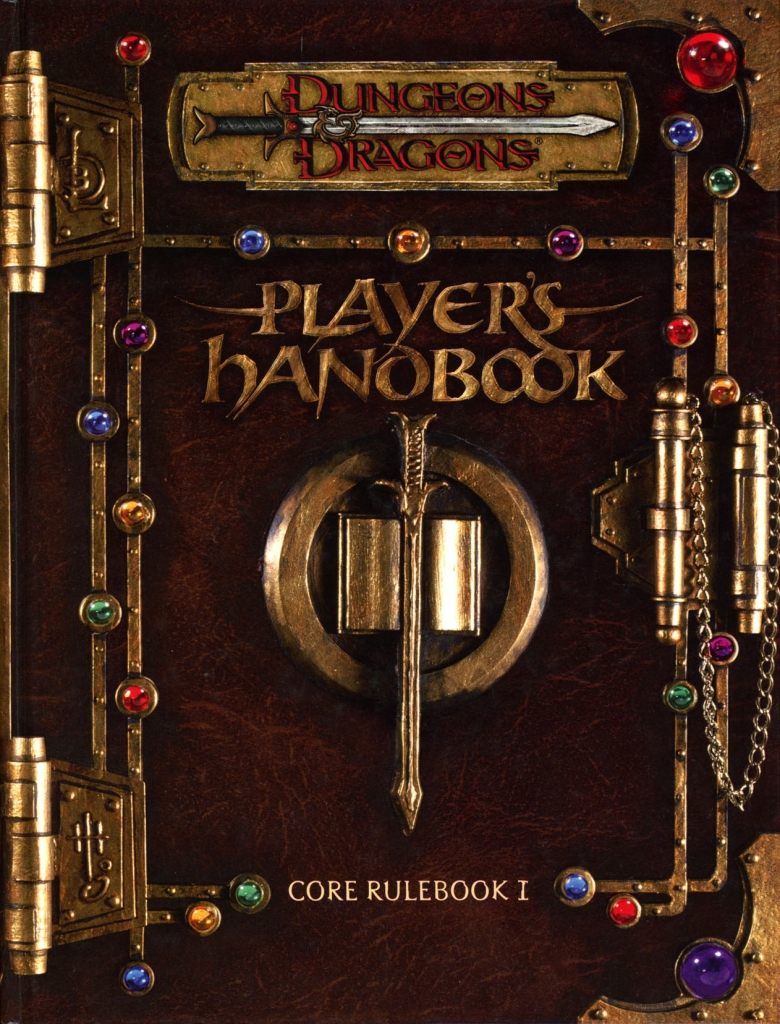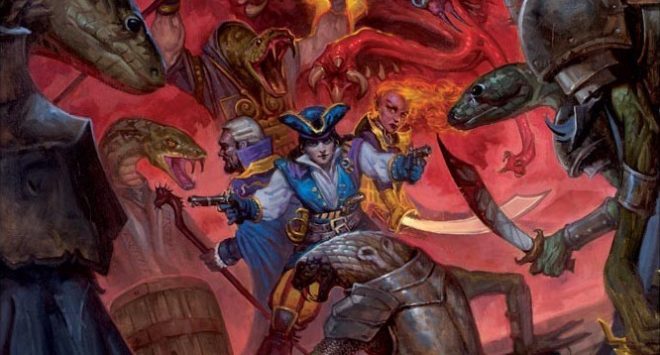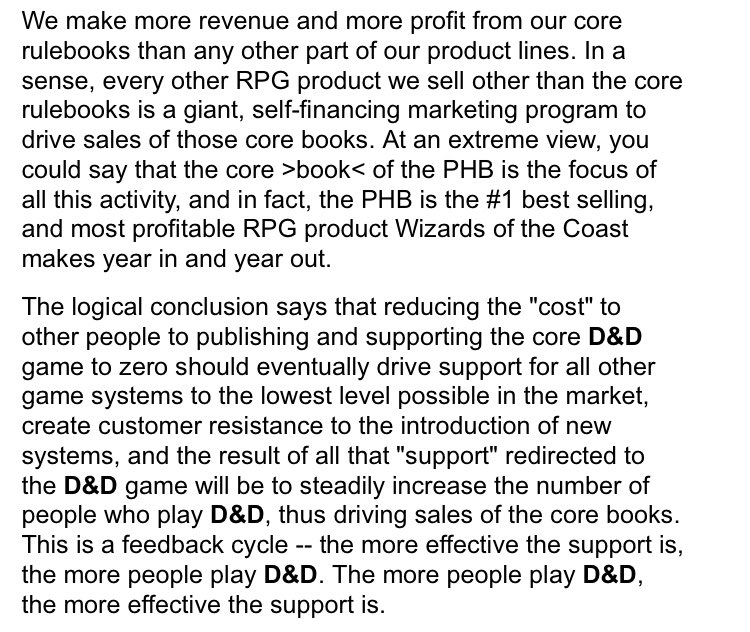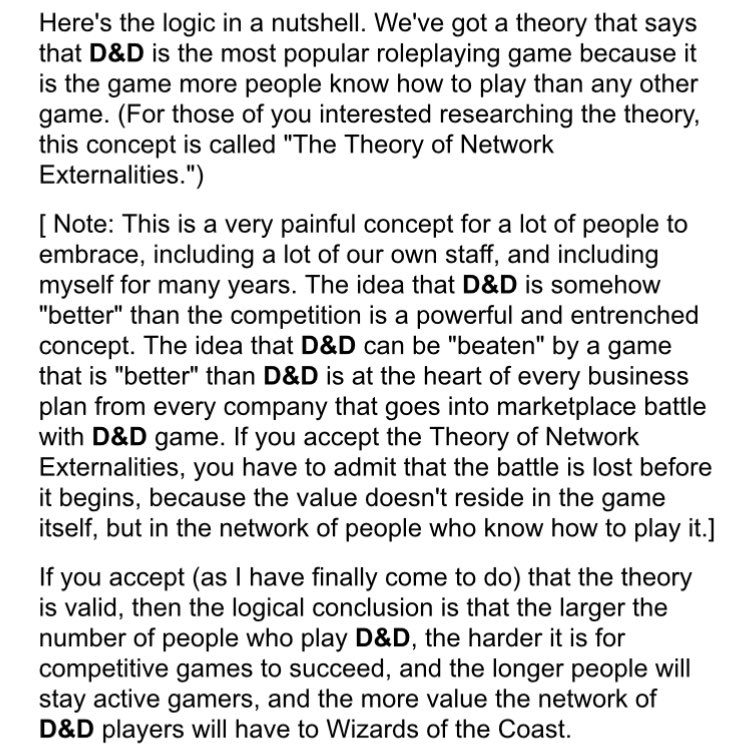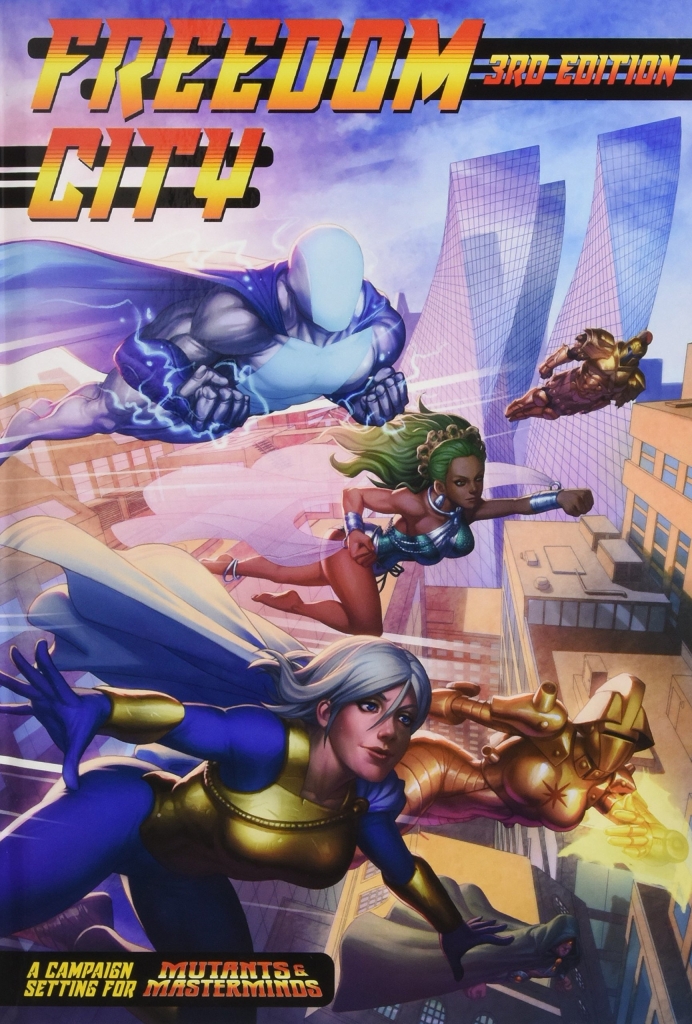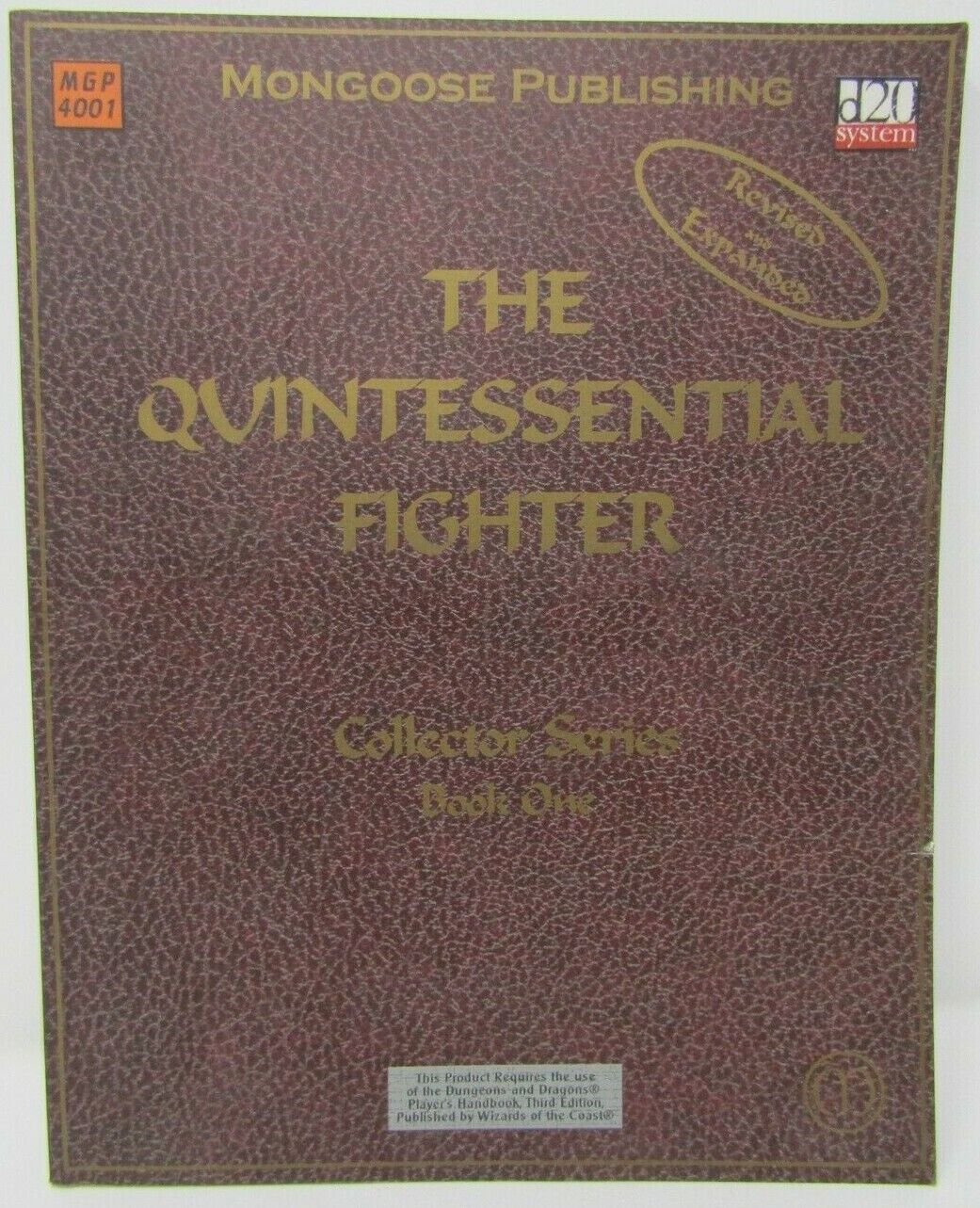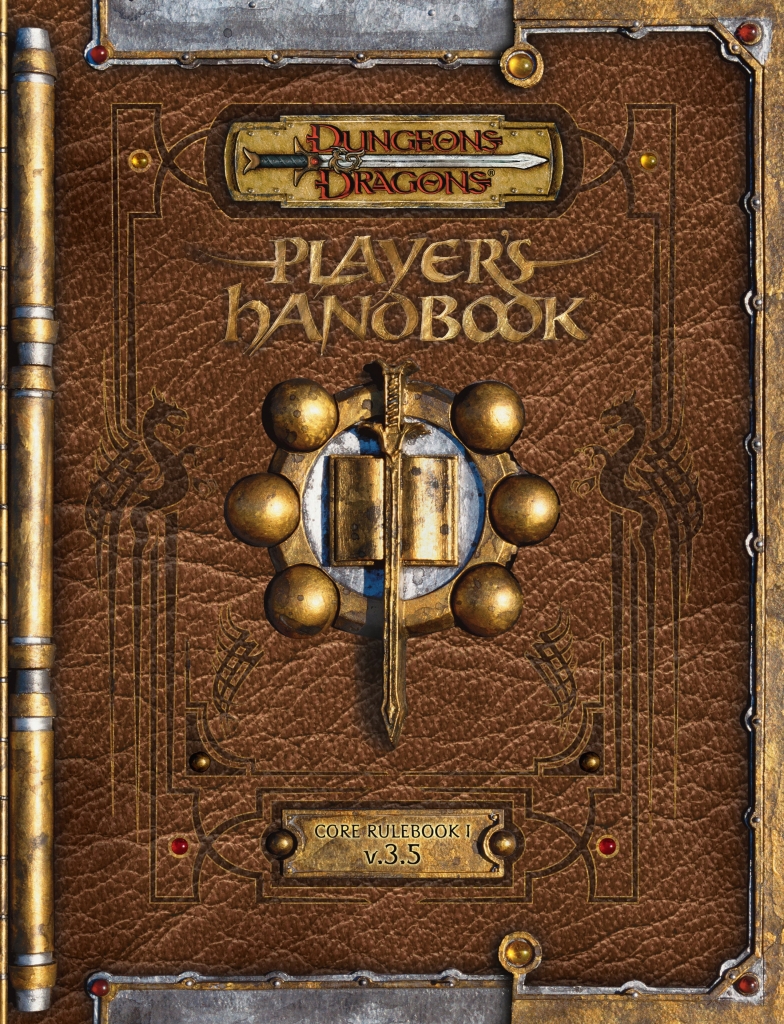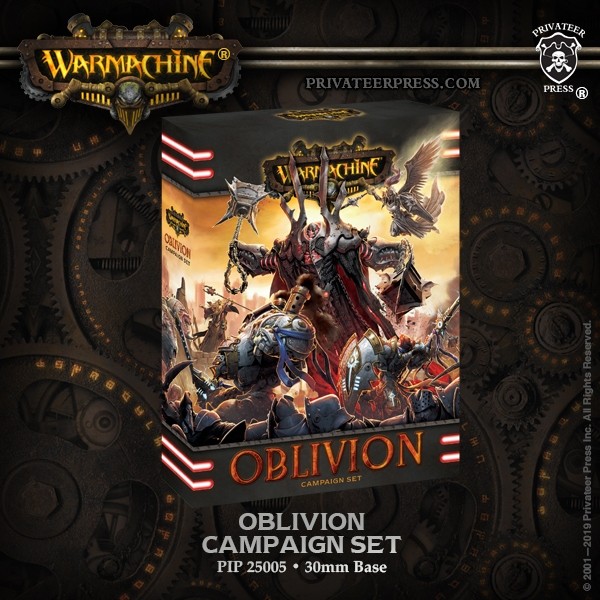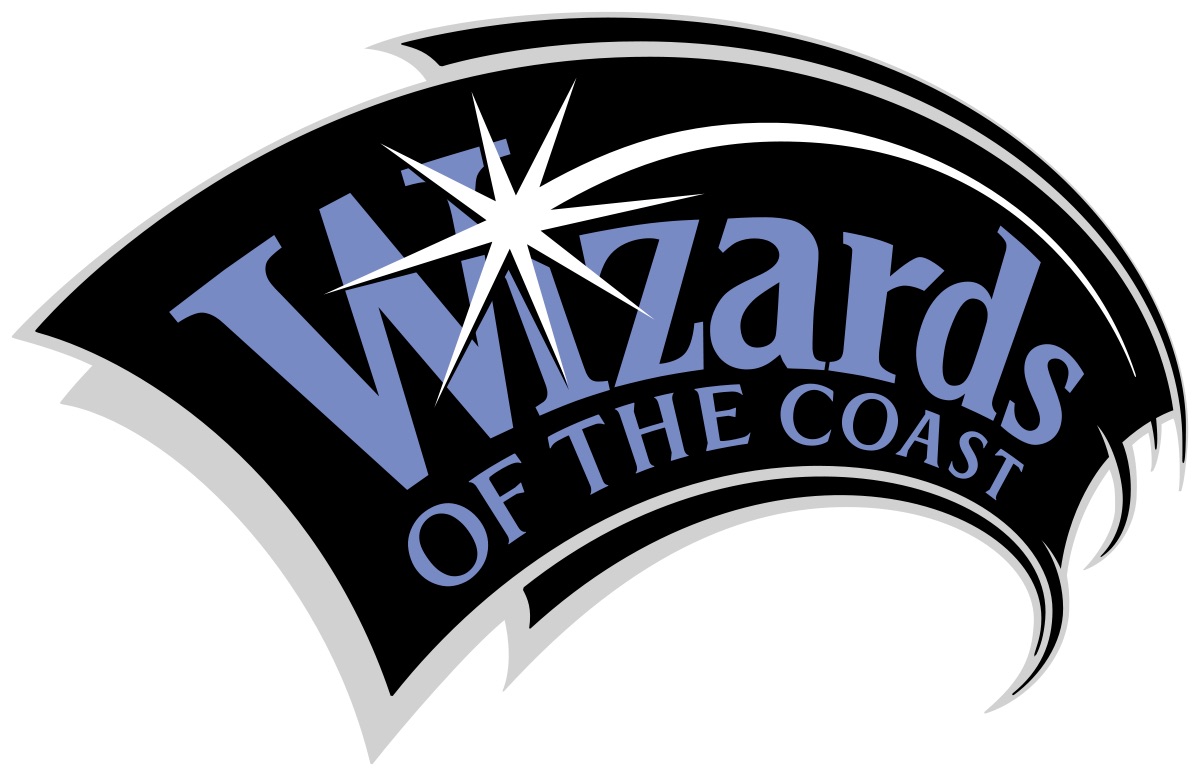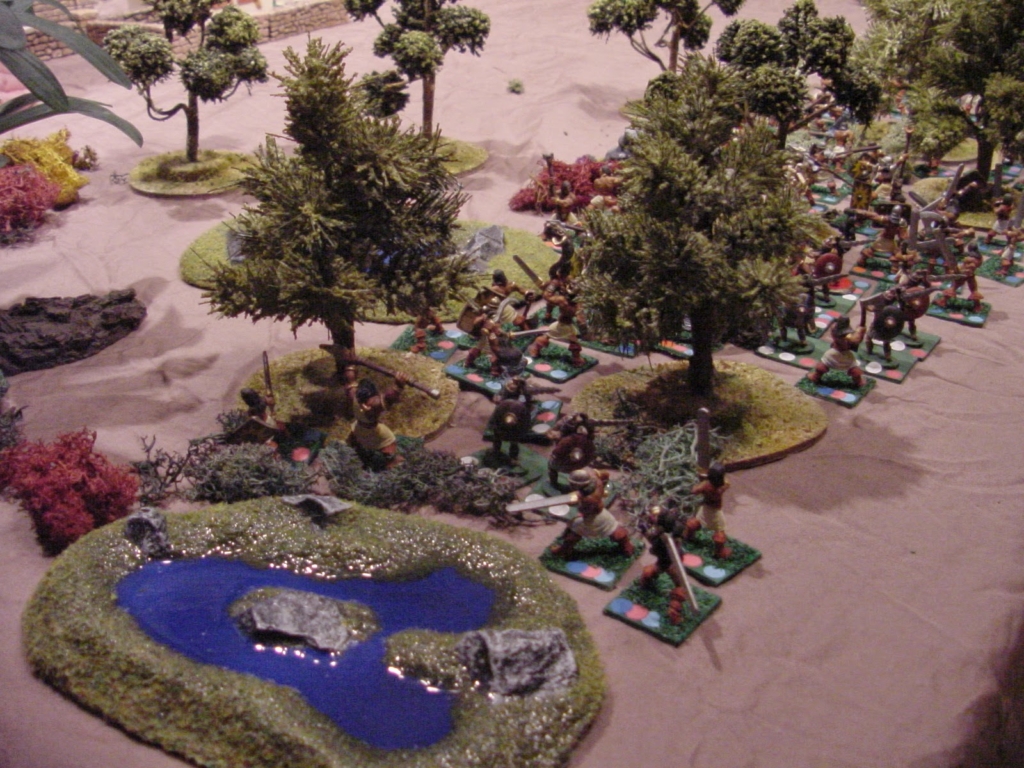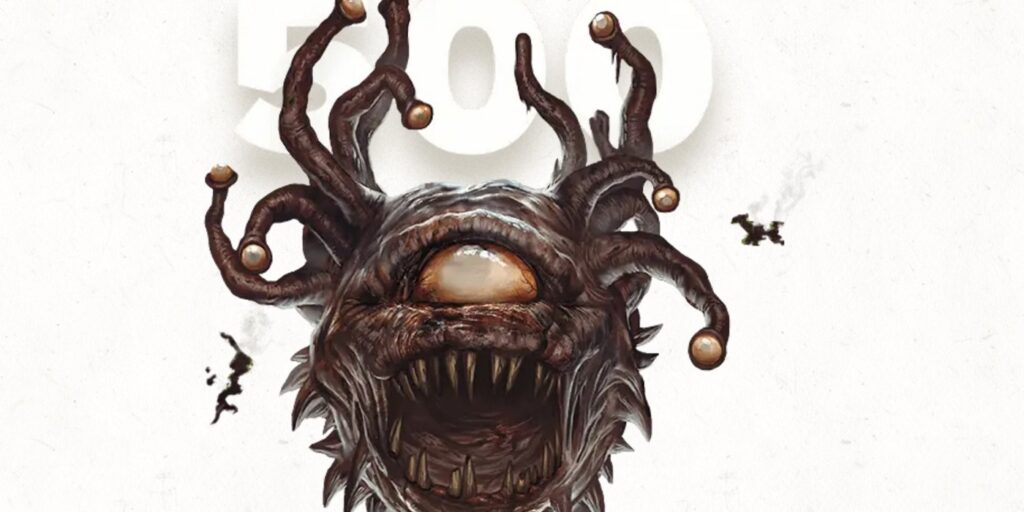A Brief History of the Open Gaming License
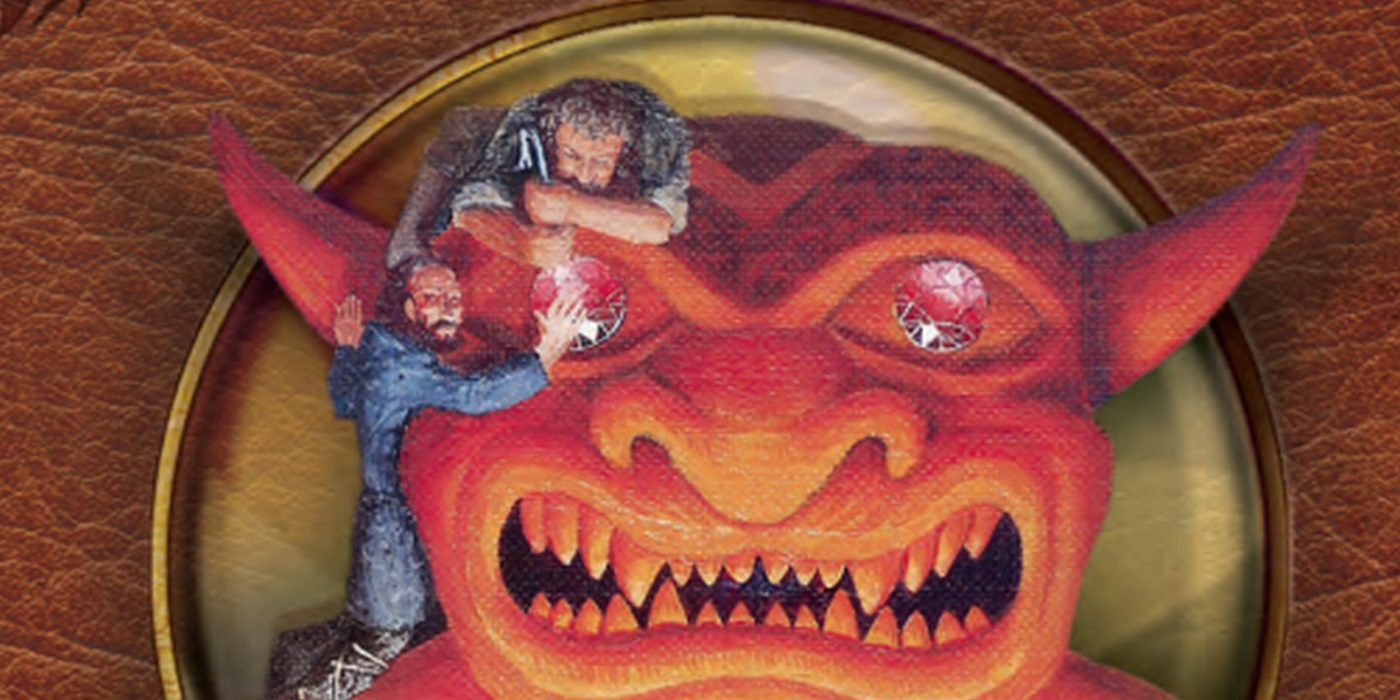
In the week since a proposed OGL 1.1 leaked, shockwaves have run through the RPG community. But what exactly was the Open Gaming License?
The OGL, or Open Gaming License, came to define a whole era of the tabletop RPG industry in the early aughts. With a new millennium on the horizon and a newly minted edition of Dungeons & Dragons lighting the way, the Open Gaming License changed gaming in a way few were anticipating.
In its wake, companies grew. Paizo and Green Ronin, just to name a few, are among the many who propped up during the early days of 3rd Edition D&D. And when it was good, it was really good. When it was bad, it was really bad.
Journey with us to the past, to the year 2000. A simpler time when Conan O’Brien was a late-night talk show host, webcomics like User Friendly and Sluggy Freelance were updating regularly, Marvel movie franchises were making money hand over fist for movie studios, and the RPG was experiencing a huge surge in popularity thanks to the latest edition of Dungeons & Dragons.
I guess time really is a flat circle.
Anyhow, in the year 2000, the Open Gaming License provided the foundation for a booming community. As long as everyone was trying to work within the confines of the d20 system. Doing so meant easy access to an audience hungry for content. Adventures were published in the hundreds. But it also meant that publishers were subject to the whims of Wizards of the Coast, even back then.
There’s a saying about history repeating itself. But throughout the early 2000s and into today, D&D or games based on its OGL top the charts. And it all sprung up from a time when TSR was dying, and D&D was a vanity project for a company called Wizards of the Coast.
Wizards of the Coast Saves D&D, Launches 3rd Edition
Wizards of the Coast made a big move in saving D&D. And with their acquisition came a new edition to really cement D&D at its new home. But 3rd Edition did more than just revise the rules of D&D. It launched the d20 Trademark License and Open Gaming License, which opened the doors for anyone to publish D&D and D&D accessories using the d20 brand.
Which sounds like, at first glance, it was all about creating a vibrant ecosystem of 3rd-party publishers doing whatever they wanted. A big part of the equation in those days was the removal of risk. D&D was popular, it had immediate recognition. Crowdfunding wasn’t even imaginable, so publishers took a considerable risk with anything that wasn’t a sure bet.
The RPG industry has notoriously thin profit margins. Nobody makes RPGs for the money (at least not the big bucks). But even so, three companies hit the ground running with their own D&D adventures ready to go on 3E Launch Day. They were Green Ronin with Death in Freeport, Atlas Games with Three Days to Kill, and Necromancer Games with The Wizard’s Amulet.
These were hardly the only ones out there. The first few years of the aughts were a veritable d20 boom. Companies could make or break themselves on how quickly they could adapt to the change in the market. Green Ronin, for instance, started as just another RPG publisher, but quickly adapted to the d20 market and earned a spot at the top. And that was the dream of the OGL, that anyone could get called up, so to speak, “to the big leagues” if they made the right kind of content.
But the OGL also meant that you gave up the rights that you had. In exchange for both the promise of not being taken to court in a costly legal battle, as well as in exchange for using WotC’s material the way they phrased it.
Which led to D&D becoming incredibly popular — as well as a glut of content for an audience that was still racing to catch up. And just like what happened in the VH1 “Behind the Music” specials of that era, one day it all came crashing down.
The System Reference Document
But first, the Open Gaming License. This 900-word document outlines how you can use the “Open Gaming Content.” Here’s a snippet:
1. Definitions: (a)”Contributors” means the copyright and/or trademark owners who have contributed Open Game Content; (b)”Derivative Material” means copyrighted material including derivative works and translations (including into other computer languages), potation, modification, correction, addition, extension, upgrade, improvement, compilation, abridgment or other form in which an existing work may be recast, transformed or adapted; (c) “Distribute” means to reproduce, license, rent, lease, sell, broadcast, publicly display, transmit or otherwise distribute; (d)”Open Game Content” means the game mechanic and includes the methods, procedures, processes and routines to the extent such content does not embody the Product Identity and is an enhancement over the prior art and any additional content clearly identified as Open Game Content by the Contributor, and means any work covered by this License, including translations and derivative works under copyright law, but specifically excludes Product Identity. (e) “Product Identity” means product and product line names, logos and identifying marks including trade dress; artifacts; creatures characters; stories, storylines, plots, thematic elements, dialogue, incidents, language, artwork, symbols, designs, depictions, likenesses, formats, poses, concepts, themes and graphic, photographic and other visual or audio representations; names and descriptions of characters, spells, enchantments, personalities, teams, personas, likenesses and special abilities; places, locations, environments, creatures, equipment, magical or supernatural abilities or effects, logos, symbols, or graphic designs; and any other trademark or registered trademark clearly identified as Product identity by the owner of the Product Identity, and which specifically excludes the Open Game Content; (f) “Trademark” means the logos, names, mark, sign, motto, designs that are used by a Contributor to identify itself or its products or the associated products contributed to the Open Game License by the Contributor (g) “Use”, “Used” or “Using” means to use, Distribute, copy, edit, format, modify, translate and otherwise create Derivative Material of Open Game Content. (h) “You” or “Your” means the licensee in terms of this agreement.
2. The License: This License applies to any Open Game Content that contains a notice indicating that the Open Game Content may only be Used under and in terms of this License. You must affix such a notice to any Open Game Content that you Use. No terms may be added to or subtracted from this License except as described by the License itself. No other terms or conditions may be applied to any Open Game Content distributed using this License.
Subscribe to our newsletter!Get Tabletop, RPG & Pop Culture news delivered directly to your inbox.By subscribing you agree to our Terms of Use and Privacy Policy.
The most relevant part is that the OGL splits D&D into two distinct parts: “open gaming content” which is free to use (which was always free to use, and not a new thing granted by the license), and “Product Identity” which are things like Mind Flayers and named characters and the Forgotten Realms (which may have been copyrighted anyway). The license echoed the Open Source Software movement at the time. But! Even “Open Source” as a term was all about making things that were “free” seem much more commercially minded!
The SRD Meant All Roads Would Lead to D&D – A Monopoly of Support
The OGL led to the creation of the System Reference Document or SRD a repository of D&D’s rules that anyone could use verbatim (and if you wanted to use the OGL you had to).
It also led to a change in the way that D&D, and the people behind it, saw the game. This led to an era where the emphasis was on the D&D community. Before TSR had been far too aggressive in looking for various copyright violations and lawsuits as a way of slapping down competitors. But WotC’s D&D was much more open. This was by design. The more open they were, the more people would know about D&D.
Because the Open Gaming License and SRD meant that everyone using it only helped spread the knowledge of D&D. It’s why, to this day, people balk at the idea of learning another game; they know D&D. This was what drove WotC in the early years, according to an interview with Ryan Dancey:
In essence, the more people publishing and supporting D&D, the longer life it would have. And this was by design. With more people playing D&D more people would know the game and see it everywhere, even in other games. In Dancey’s own words:
The monopoly System Reference Document was designed to get the community talking about D&D, thinking about it, and using it for whatever they could think of. Instead of talking about or learning other games. WotC’s D&D wanted to be the ecosystem upon which all other games were built. And for a while, that worked.
The D20 Boom
You would, in general, see three kinds of d20 content: adventure modules, splatbooks, and system hacks. Those first two were 3rd party publishers providing “support” as Dancey puts it for D&D, while the latter, System Hacks, helped spread “Network Externalities.”
All of this played into the idea of making D&D the most successful game not because it’s mechanically the most fun or best game anyone would play, but because it’s the game everyone knew.
Adventure modules are fairly obvious, and probably one of the easiest to make. They were costly for WotC to create, but for a 3rd party who doesn’t have WotC’s team and overhead? An easy business. There were hundreds of these. And in the heyday of 3.0 you could walk into a gaming store and be assured you’d find something supporting D&D.
Splatbooks, meanwhile, were supplements for D&D proper but not published by WotC.
Things like Mongoose Publishing’s Quintessential Guides or Green Ronin’s Races of Renown fall under this category. There were plenty of these as well.
System hacks, on the other hand, were different interpretations of the d20 Engine, adapting it away from the 3E system to get a different flavor of the game.
This led in part to the Old School Renaissance (OSR) where people would modify 3rd Edition to try and evoke the elder days of D&D’s Basic or eXpert or Master systems with folks like Goodman Games releasing Dungeon Crawl Classics. But you’d also see publishers adapt competing games like Vampire the Masquerade, Mutants and Masterminds, even the swashbuckling 7th Sea saw a brief, furtive existence as a d20 system title.
Every major RPG system had to drink from D&D’s well if they wanted water.
The D20 Bust
And it worked. From 2001 and on, there was a veritable explosion of d20 content. It’s a case of the right tools at the right time. The community was ready, and hungry, for more games. Thanks to the internet they could get shared around much more readily; this is the same era in which .pdf publishing allowed indie publishers to take advantage of lower overhead costs, to get their product out in front of more eyes than ever before. It was the gold rush of the internet.
And just like a gold rush, it all came to an abrupt stop. Actually, it would come to several abrupt stops. But for now, let’s take a look at the first crash, the d20 Bust, which comes just three years into the OGL. Which is not a lot of time.
What caused it? WotC decided to update its core rules from 3rd Edition to 3.5. It’s easy to forget how different the two versions are. But they were as close as you can get to being incompatible without actually being incompatible. In many ways, 3.5 is the D&D ruleset that led the next decade of RPG development, to the detriment of many publishers who had stocks full of now obsolete 3.0 materials.
Sure you could convert modules.
But by and large, if you’re buying something — you want something that already works with the game you’re playing. And since players had universally embraced 3.5 edition’s rules, anything based on 3.0 was out. This was a change that indie publishers never saw coming. How could they, unless WotC warned them?
As a result, the gaming industry was hit hard. Many companies folded. Others soldiered on, but only by keeping themselves light. Other companies shifted away from RPGs altogether, which is what happened with Privateer Press, who took their success with d20 content and their IP of the Iron Kingdoms into Warmachine, which would go on to carve out a niche in the non-collectible miniatures market. From there it’s all Monsterpocalypse, Hordes, and Oblivion, so it seems like things have worked out well for them.
Most RPG companies that are around today have some contact with the OGL, though. A fact that would leave the industry gutted when WotC decided to revoke the OGL for the first time.
The First Time WotC Stopped Supporting the OGL
When D&D 4th Edition came out, it shook the industry. Mostly because WotC pivoted to a vastly different license. Wizards decided to stop supporting the OGL for 4th Edition, instead issuing a much more restrictive Gaming System License. This move gutted the industry and led to the second big crash in the first decade of this millennium. Publishers could either accept the harsher terms, or they could stick with the unsupported OGL 1.0a. Which is where Pathfinder is born.
Affectionately called D&D 3.75 by its loyal fans at the beginning, the Pathfinder RPG took off, launching ten years ago in 2009 to massive fanfare. Especially since the new game was largely compatible with the old 3.5 material, meaning that players could still use most of their old books if they went with Pathfinder, as opposed to D&D’s 4th Edition, which was a massive pivot from 3.x.
For a while Pathfinder managed to overtake D&D. At least until 5th Edition came out and brought back the OGL for 5th Edition. This brings us to the troubles today.
But while Wizards of the Coast may be having an internal crisis with their management, other games have long embraced the open gaming principle.
Apocalypse World and Blades in the Dark have found prominent success in the industry. You can make games Powered by the Apocalypse or Forged in the Dark with very little trouble, and no one calling for 25% of your revenue or demanding that you report on what products you’re releasing.
Paizo (and several other companies) have proposed the ORC license to give everyone a common, creative license to have works published under.
The Problem is RPGs Aren’t Brands
There’s a sort of cycle if you take the long view of Dungeons & Dragons. Originally, the game came about out of a love of this exciting new type of game that was discovered in the midst of conventions. A wargame where people played characters and had different objectives — a passionate community of interested players who felt empowered to make what they want.
And once D&D was formalized, this was often the case. The whole reason the Thief/Rogue exists in the game is that some players came up with an idea that sounded fun, called up Gary Gygax, and said “hey we thought this might be cool.”
Fan-published magazines encouraged creativity. That, in turn, led to the developers incorporating fan-created monsters in books like the Fiend Folio.
But as the audience grows and money starts rolling in, a shift happens. Executive management starts thinking about how else the “brand” can grow, instead of ways to make the “game” better. This happened at TSR, more than once. The first time was in the wake of rapid expansion from TSR when the company started publishing books, making miniatures, and printing needlework. It barely recovered.
Then not long after, the company fractured into four departments, including one tasked with getting a D&D movie and TV show off the ground. Because time IS a flat circle.
But ultimately, D&D has been at its most successful when it was driven by the community. Whether in the early days of D&D’s magazines, in the heyday of 2nd Edition, or even the 3rd Edition boom. In a game that you can’t play without a community of friends, that community of friends ends up being what keeps it going.
I guess what I’m saying is, the real OGL is the friends we made along the way.

